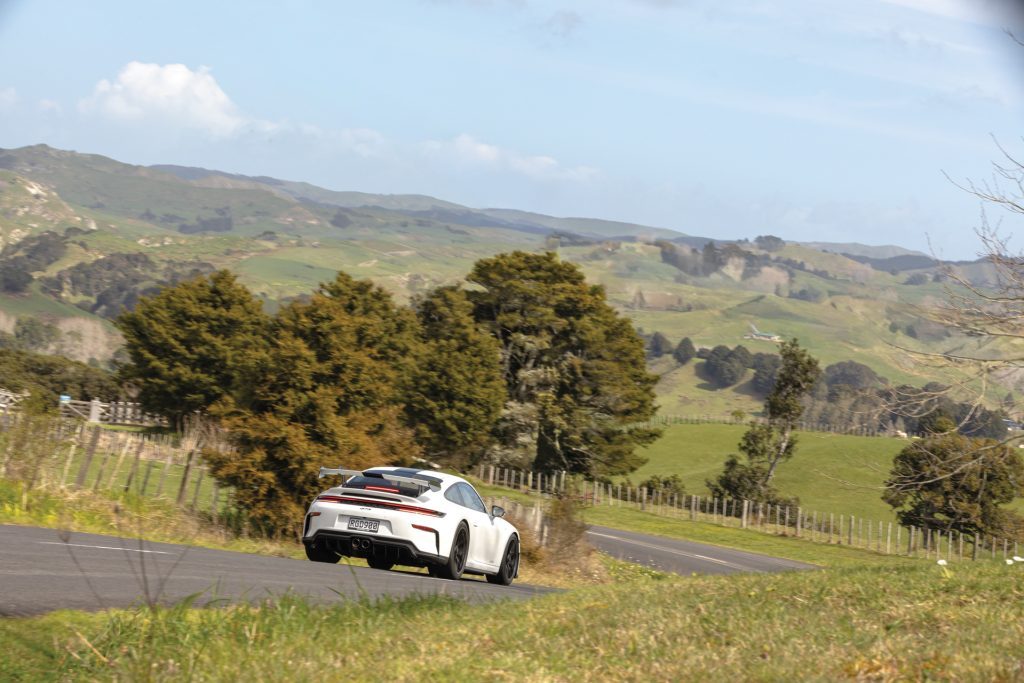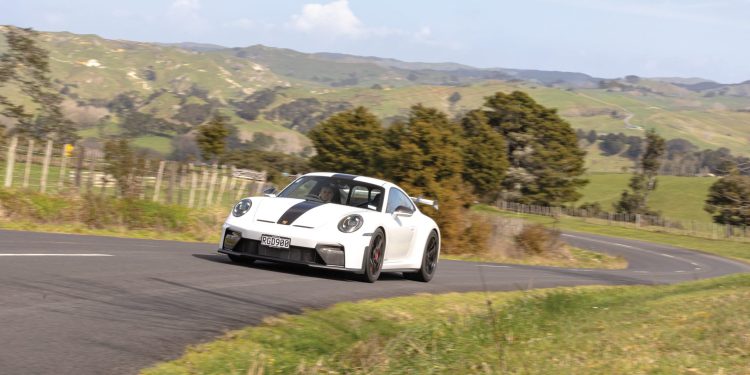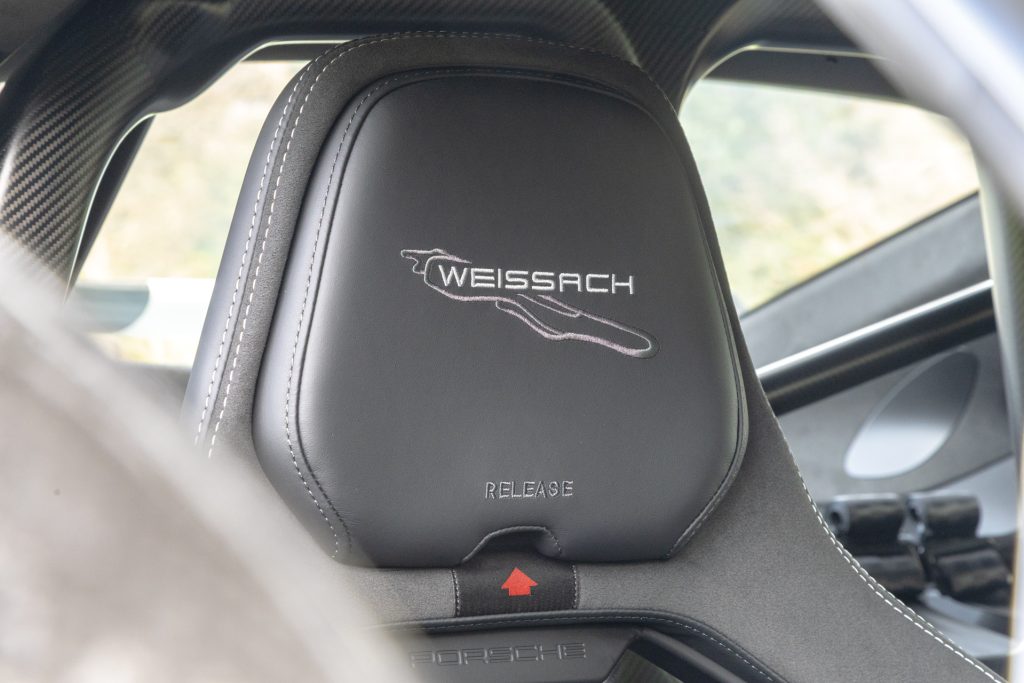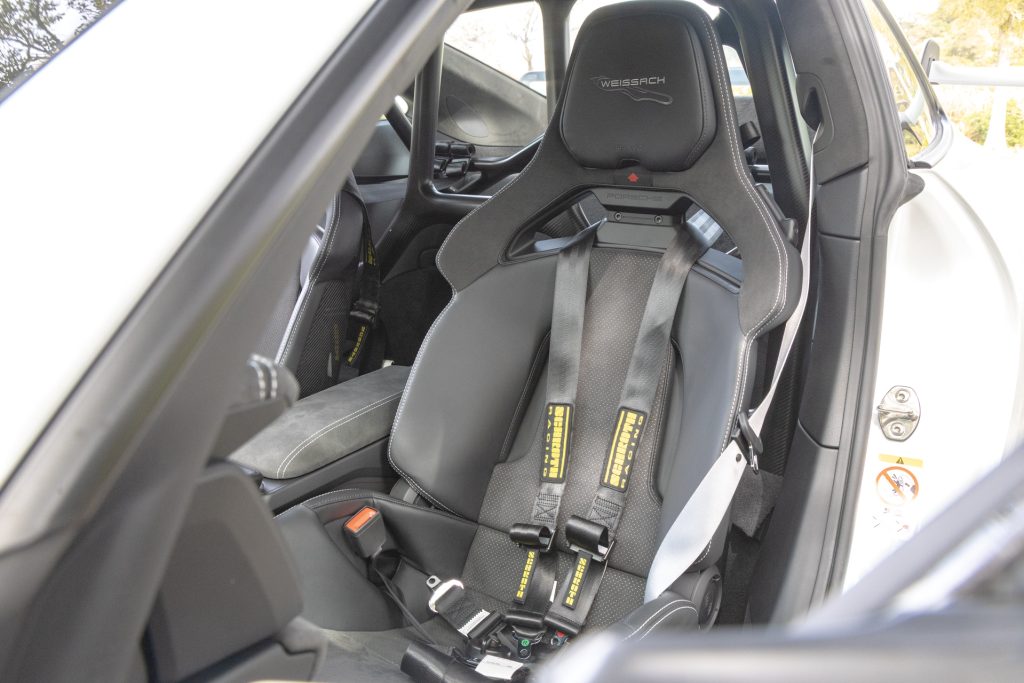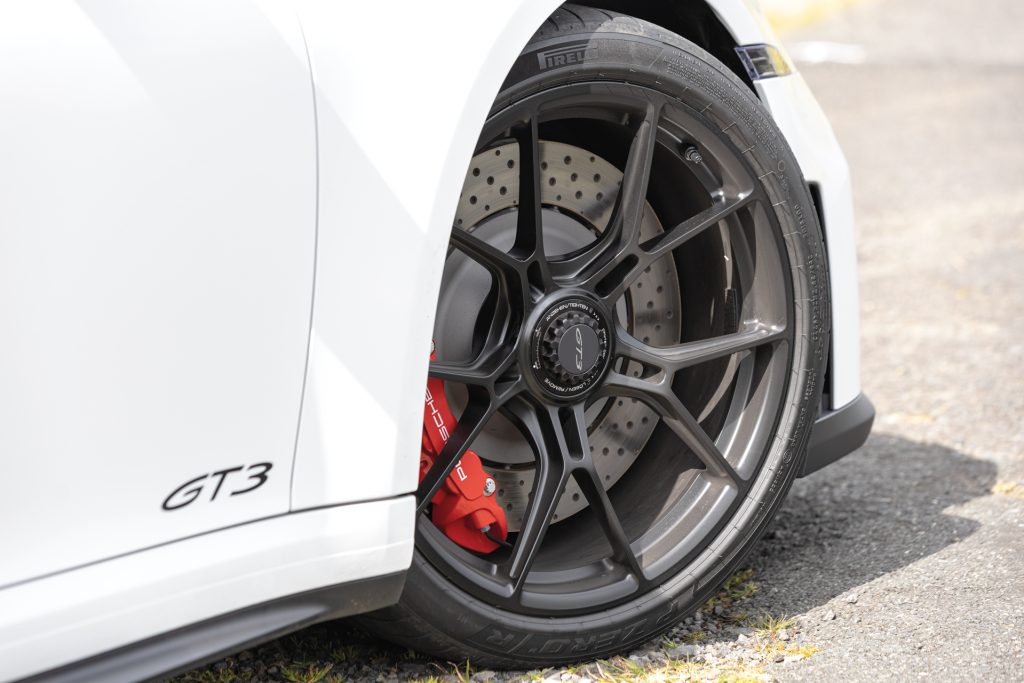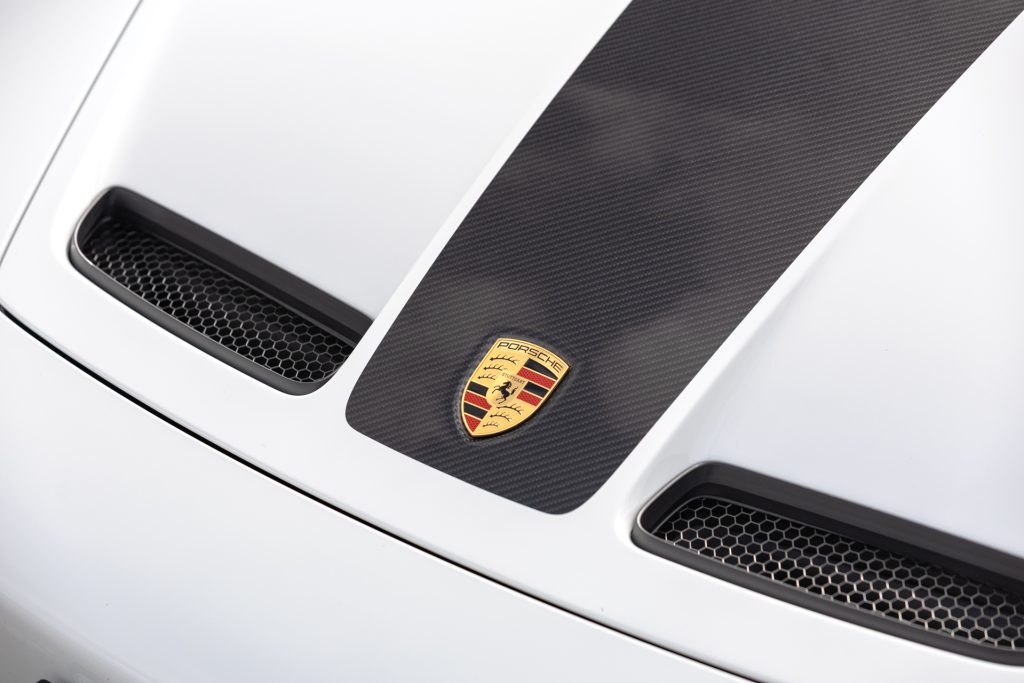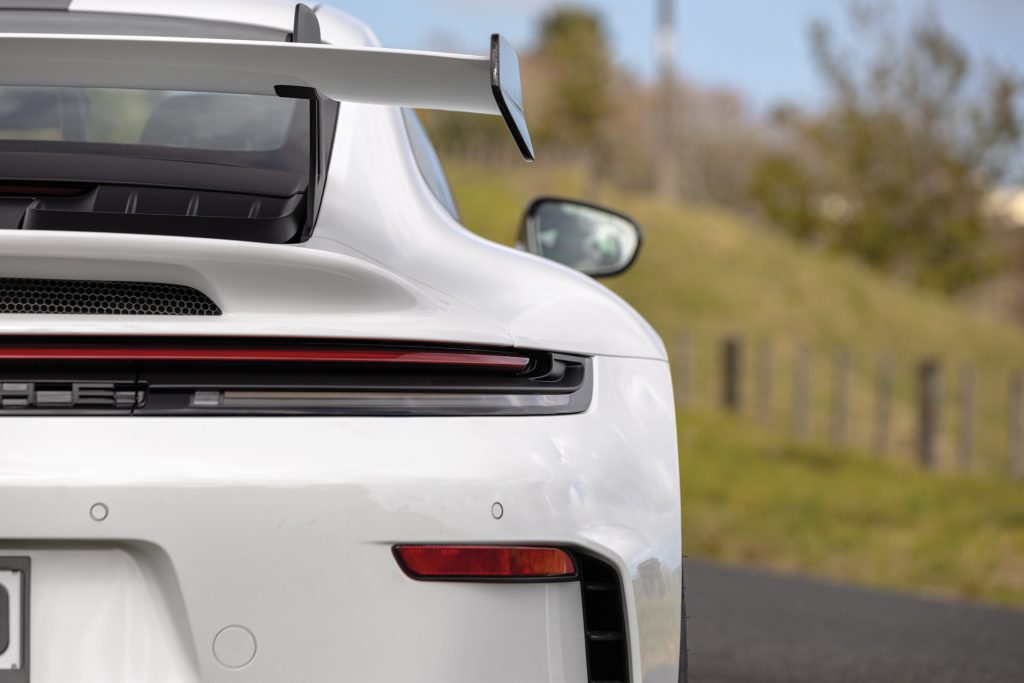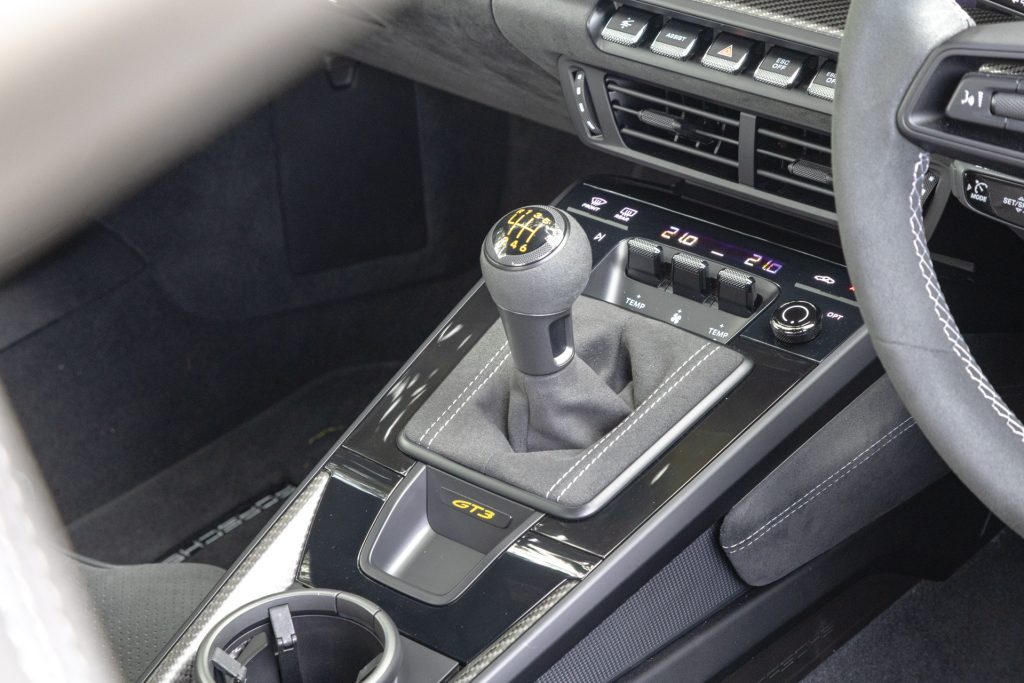2025 Porsche 911 GT3 Review
Words: Kyle Cassidy | Photos: Alex Schultz
Porsche can never leave a good thing well enough alone and has updated its GT3 as part of the usual mid-gen refresh. So how do you improve on perfection?
he Porsche 911 GT3 isn’t a car that makes a lot of sense. Looked upon through a rational lens, it’s impractical, rather uncomfortable, loud and, legally, you can barely scratch the surface of its potential. Plus, it’s horrendously expensive. And that’s why enthusiasts love it.
Porsche has given its 992 generation GT3 an update, this being the ‘dot two’ version. And it is a unique proposition in the domain of European super sportsters; a rear-drive, naturally aspirated machine with a manual trans.
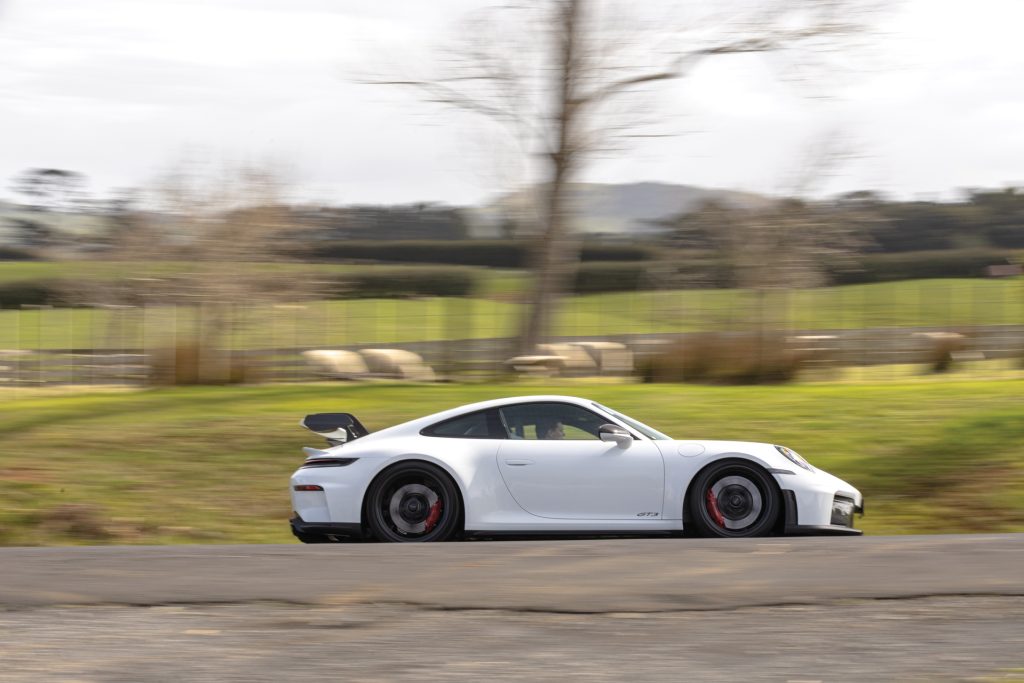
Living with a road racer
The GT3 is a car you could ‘daily’, though it’s designed with more extreme use in mind. So how does it perform more mundane tasks like getting the kid to school? It’s still a 911, so it’s reasonably civilised but everything’s just a bit harder in the GT3. Especially when it’s fitted with the $12k bucket seats. While said to be more comfortable in the ‘dot two’, they’re still unrelenting with deep bolsters and minimal padding and adjustment. One party trick; you can remove an insert in the headrest, making room for your helmeted head when you’re pounding around the track. The new buckets also now fold forward so you can put things, like your helmet, in the back. There’s no room for the occasional rear seat passenger in the winged GT3, though you can option the +2 seating if you go for the Touring. There’s not much room for anything in the back of this example, fitted with a half roll cage. That and the rear wing really conspire to rob your view rearward. The instrument cluster is now fully digital, the layout customisable, but some might miss that big analogue 10,000rpm tacho.
Our tester had the manual transmission, meaning you’ve a clutch pedal to deal with but it’s light with a positive engagement. And there’s a hill holder and throttle blipper too. The ride is only ever lumpy, and the GT3 sits very low; the standard-fit front axle lifter is needed to ensure the bumper and undertray stay intact when dealing with driveways and the more vicious speed bumps. The steering is easy though and there’s also rear-wheel steer, handy when parking.
You could get by using it daily, if you are that way inclined, but you’d probably opt for the Macan to commute, leaving this for those special occasions. And any drive where you can click into Sport mode and enjoy the full rev range of this special flat six is going to be enjoyable.
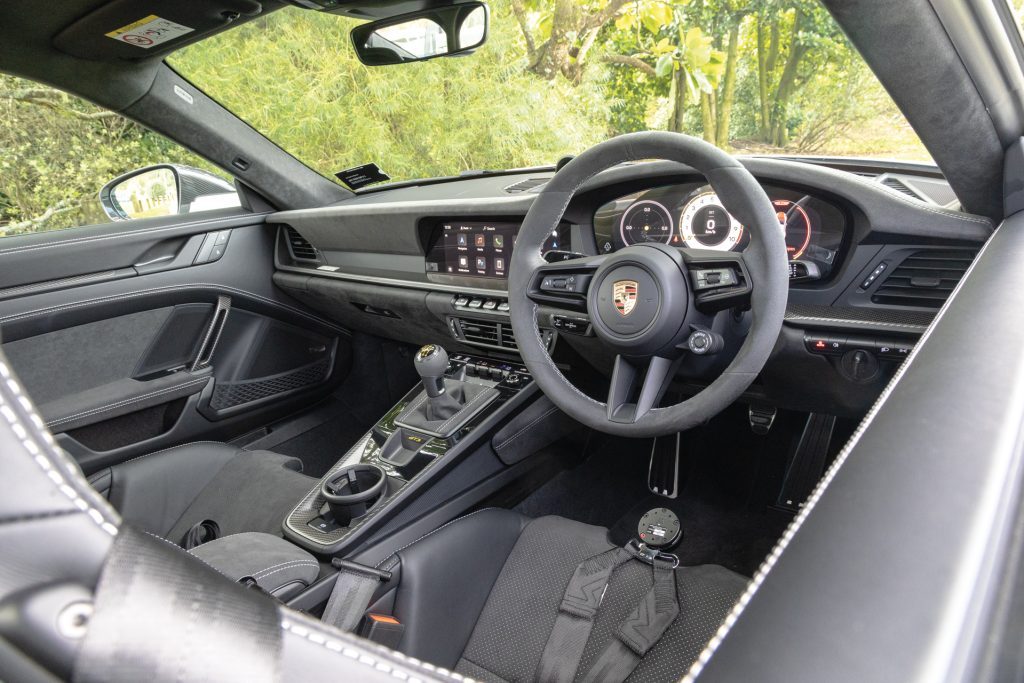
Too racy for the road but?
Porsche hasn’t made a whole raft of changes for this update, rather lots of subtle little things. One of those is a tweak to the suspension that reduces the size of the bump stop, so you’ve now got a bit more travel before you run into them. However, with Porsche active suspension management on the case, that’s not such an issue. The ride is firm, yes, but not harsh, and this can brush off big bumps remarkably well. The GT3 only has a Sport and Track mode for the dampers, the latter best left for circuit work. Left in Sport, it’s not often bullied off line by the bumps. It rides low though, and with a few aero appendages underneath channelling air around, these can get scuffed on nasty depressions. So you still have to scan the road thoroughly for the dips. On surfaces that aren’t so beaten up, this is a riot.
They’ve tuned the steering to make it even more accurate, and it really carves. The turn-in is quick, with a little help from the rears. It points with minimal effort, locks on line, and rarely will it stray. And the feedback is solid; it filters the noise but always keeps you informed.
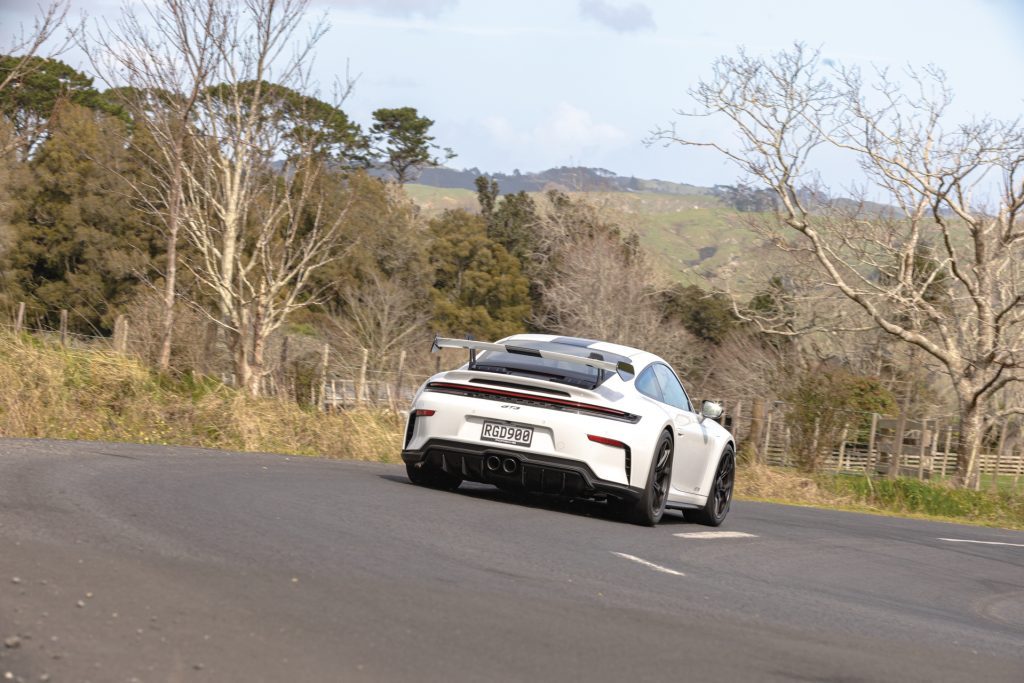
Revs, revs and more revs
Changes to the engine see two extra catalytic converters added to keep it emissions compliant. These add weight while a reduction in back pressure reduces torque. So they’ve shortened up the final drive ratio to compensate. That’s not a bad thing, apart from during sedate cruising. In top at 100km/h, the 4.0-litre is churning away at 2900rpm. So that adds more noise to your travel. As does the P Zero rubber that roars like a hurricane on coarse chip. Take your ear plugs if you intend on touring.
But make sure you unplug them when you get a chance to stretch the GT3’s legs. The six cylinder makes a grand racket. It loves revs, and the more of them it makes, the better it sounds. The throttle response is sharp, the delivery wonderfully linear in a way that only an atmo engine can dish out.
It’s crazy quick obviously, with 375kW and 450Nm, but it’s not insanely fast, if you get our drift. You can pick your moments to enjoy the full rev band, at least through second gear, sometimes third if you’re a bit naughty. Those are your two gears for on-road fun, slipping it into fourth when you want to cool things down. While the 4.0-litre is remarkably tractable down low, it gives its best from 5000rpm onwards as the VarioCam gets into high-lift mode. And it fair hurtles towards its 9000rpm limit.
You can just leave it in third gear alone and it will happily burn up the road. But it’s better to overdo it. Pile into the corners hard on the picks, and it remains impressively stable. Apparently they fettled the anti-dive geometry of the double wishbones to improve stability, so well done there. And the brakes are always up for it, wonderfully progressive and really strong when you hit them. With little effort, the gear lever plucks second for the exit, and with screeds of rubber on the rear (and ‘only’ 450Nm to contend with), you’re not wanting for traction.
The gear shift is all part of the act. You don’t need to manhandle it around the gate, rather gently guide it on its way. It has a short, clicky action that makes you change gears more often than is strictly necessary. The blipper makes it all very easy and mechanically sympathetic too.
Opting for the manual gearbox over the PDK (a no-cost option) means you get a mechanical diff versus the electro-mechanical device with the auto. So the latter is better at optimising the traction out of the bends. Occasionally, if you’re over eager on the exit, you can get a sniff of power-on understeer, but nothing dramatic. The GT3 is just a brilliant machine. It’s better, but unfortunately it’s a lot more expensive too.
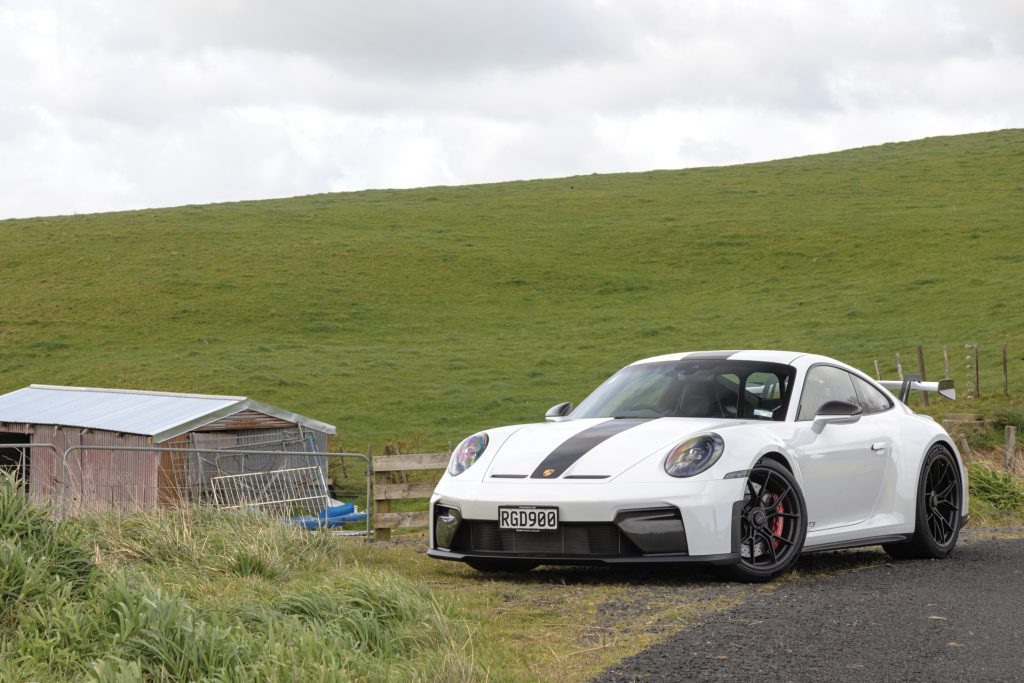
Perfect but pricey
The spec sheet of this 2025 car listed the price at $422,900, but it’s since risen to $435,900 for the 2026 model. Circa 2022, the last time we drove a GT3, it cost $349k. Guess Porsche has to recoup those EV development losses somehow. You can of course inflate the price further with options (refer to the sidebar) like the Weissach Package fitted here.
Whether you go manual or PDK, the choice is yours, as both are excellent operators. How much longer can Porsche keep offering this high-revving engine with a manual trans is something to keep in mind. Apparently the hybrid set-up of the GTS is not compatible with a manual. Who knows what is in store for the next GT3? This might be where it peaks.
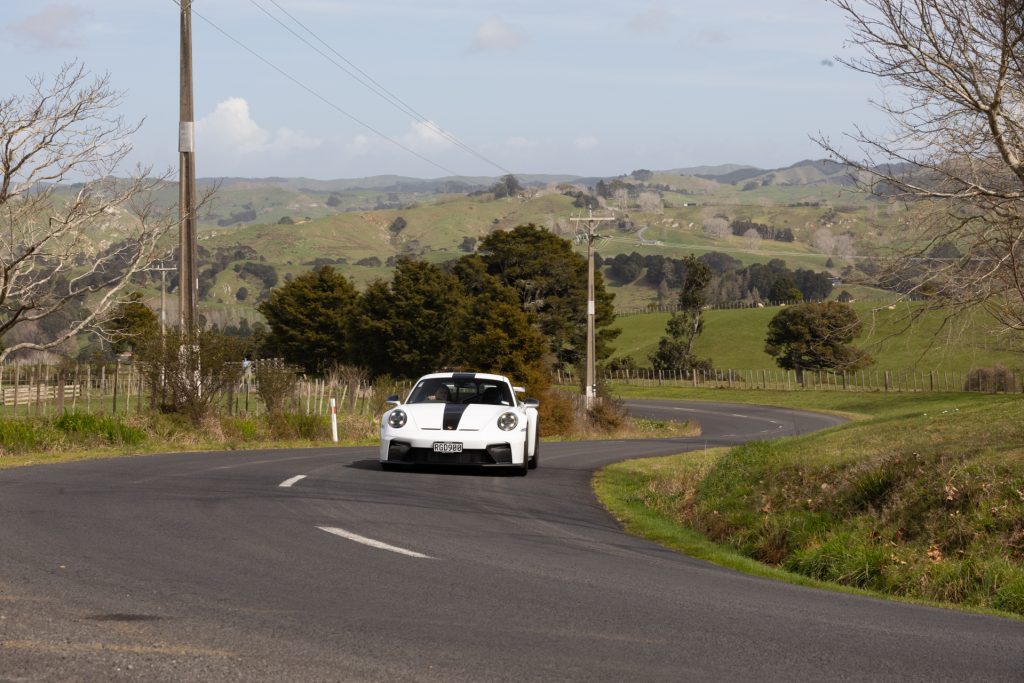
Porsche 911 GT3
$435,000 / 13.7L/100km / 310g/km
0-100 km/h 3.9s
Ambient cabin noise 78.8dB@100km/h
Engine 3966cc / Flat 6 / DI
Max power 375kW@8500rpm
Max torque 450Nm@6250rpm
Drivetrain 6-speed manual / RWD
Front suspension Wishbones / swaybar
Rear suspension Multilink / swaybar
Turning circle 10.4m (2.1 turns)
Front brakes Ventilated discs (408mm)
Rear brakes Ventilated discs (380mm)
Stability systems ABS, ESP
Safety AEB
Tyre size f-255/35R20 r-315/30R21
Wheelbase 2457mm
L/W/H 4570 / 1852 / 1279mm
Track f-1601mm r-1553mm
Fuel capacity 63L
Luggage capacity 135L
Tow rating Not rated to tow
Service intervals 12 months / 15,000km
Warranty 3yrs / Unlimited km
ANCAP rating Not rated
Weight (claimed) 1462kg
Spend a lot, save a little
The list price is just a starting point for the GT3 ownership. What you’ll want is the $44,450 Weissach Package which helps trim 12kg from the mass. You get a front lid, roof and rear wing made of carbon fibre reinforced plastic (CFRP) while some of the exterior bits get a high-gloss carbon finish. Inside you get that roll cage in visible carbon, a lightweight door panel with a carbon handle, Race-Tex and carbon finishing on a few trims parts, some Weissach Package logos and six-point seat belts. Underneath, the rear anti-roll bar and coupling rods, and a bracing panel are also made of CFRP. If you don’t want the roll cage, the pack only costs $35,500. The Weissach Package is only available in conjunction with the Lightweight Sport Bucket Seat option ($12,270).
For the ultimate in weight saving, you’ll be wanting the magnesium forged wheels, which saves another nine kilos, but cost $31,320. Why stop there? Add the Ceramic Composite Brake for $20,690, bringing the total to $544,630. You could also add a custom paint job, costing between $23k and $55k, though that might be overdoing it.
